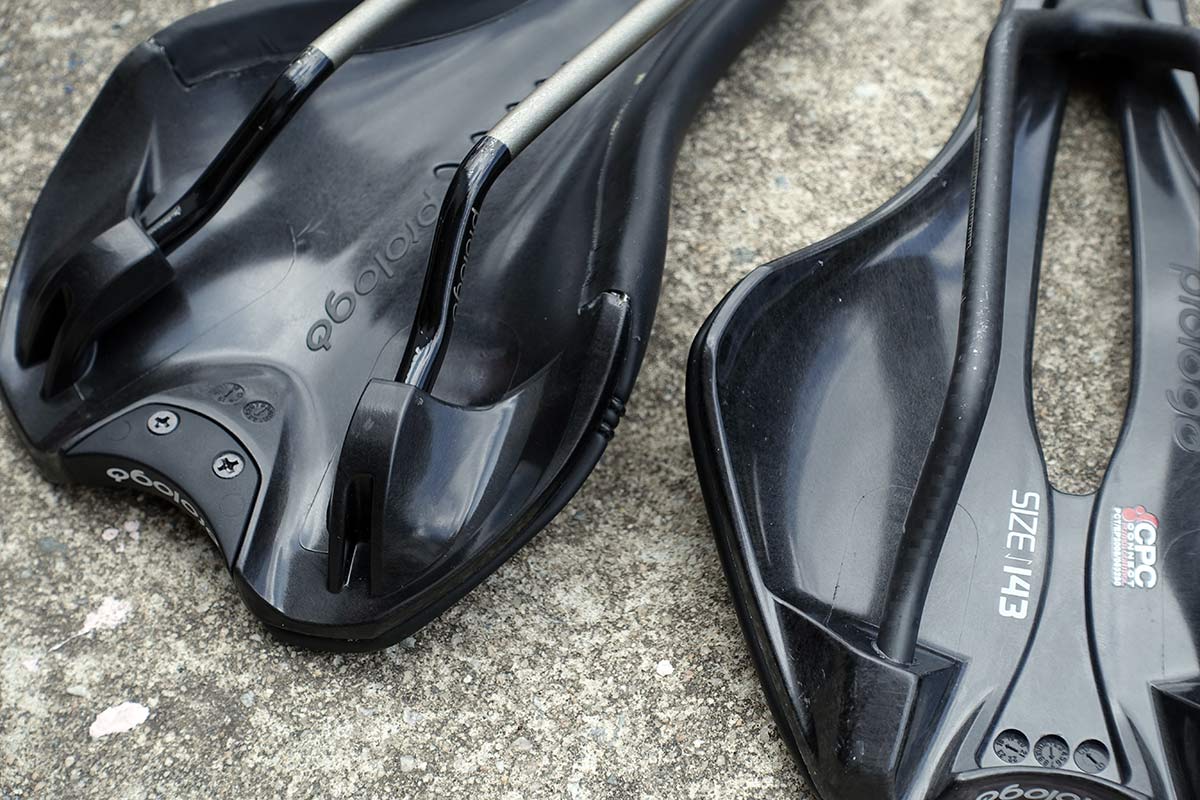Ever wonder what all of the different materials, shapes, sizes and features really do on a saddle? We partnered with Prologo to explain all the features in this five-part video series.
For part two, we explore the different materials used to create the shell. The saddle’s shell is what gives it its shape, and it serves as the platform for the rails and foam to attach, creating the structure of your bicycle’s perch. As you’ll see in this video, the top-of-the-line carbon fiber saddles aren’t always the right option for every rider, even if you can afford it.
The biggest takeaway? It’s worth finding a saddle shape you love (and that loves your anatomy back) before upgrading to a carbon fiber shell. Yes, it’s lighter, but it’s also stiffer than the carbon-infused nylon shells found in most performance saddles. Nylon and carbon-nylon shells offer more flex, and the addition of carbon fiber (30% in the case of Prologo) adds strength and durability without giving up too much flex. And it’s that flex that helps the saddle feel more comfortable for many riders.
Check out the other Saddle Overview Series videos here:
- Part One: Do I really need carbon rails?
- Part Two: What about a carbon shell?
- Part Three: What do I need to know about the foam?
- Part Four: Road vs MTB saddles
- Part Five: What’s the best saddle shape for me?
Huge thanks to Prologo for supporting this series. Prologo makes a massive range of saddles, with different shapes, widths, curvatures and features to fit every rider and every budget. Check them out next time you’re looking to upgrade. And be sure to subscribe to Bikerumor’s YouTube channel so you won’t miss a single episode!
